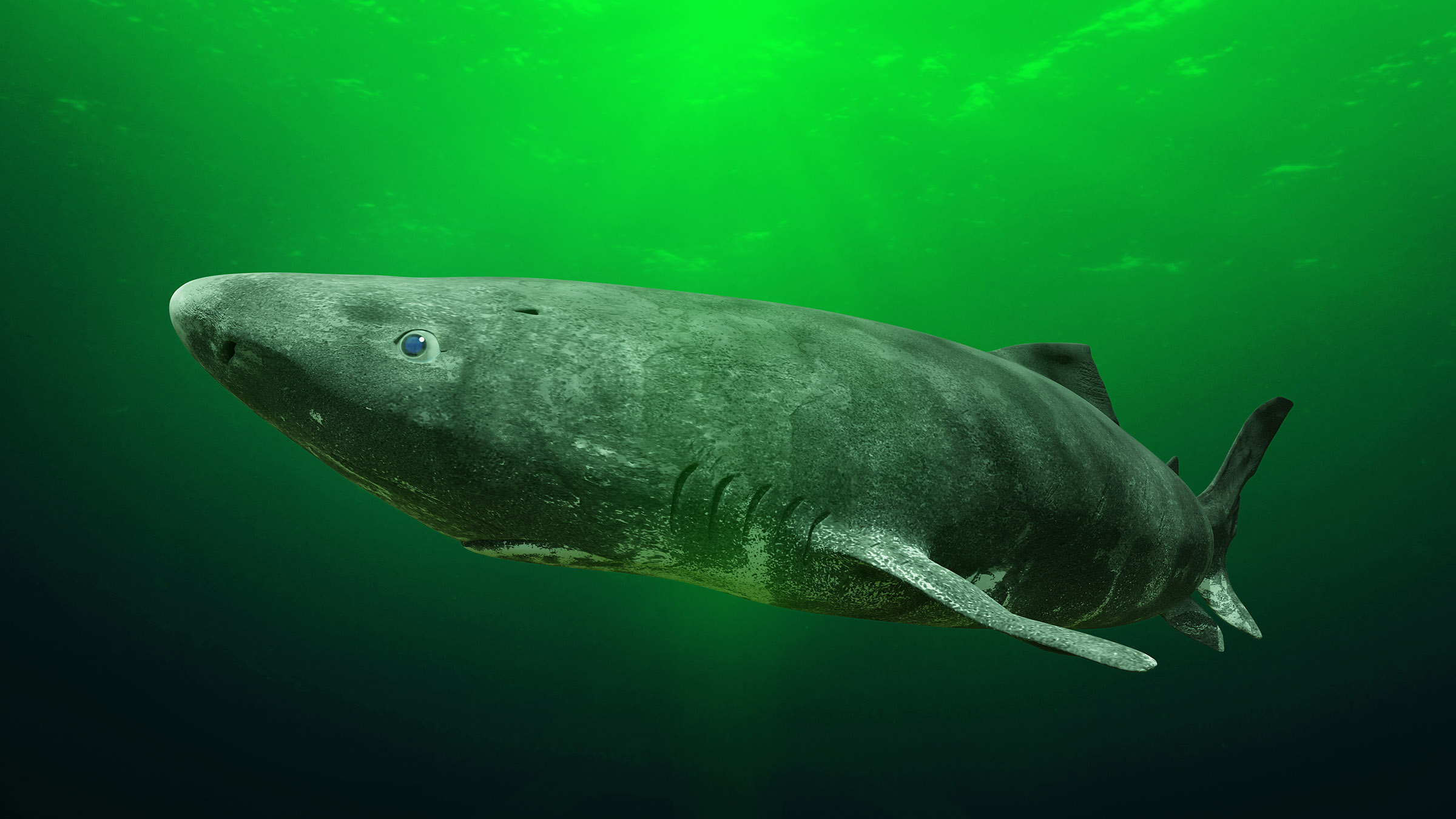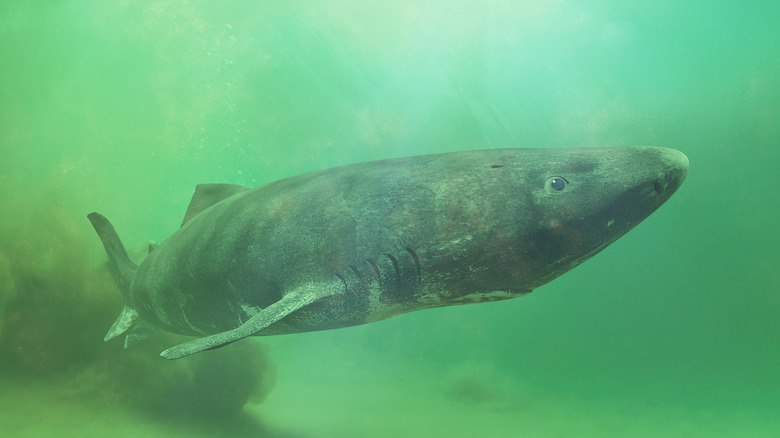This Shark Can Live For Over 400 Years And We Finally Know How
Scientists may finally understand how the Greenland shark lives for 400 years. While not exactly that spectacular looking of a creature, the Greenland shark makes up for its hulking frame, sandpapery skin, and awkward fins by living for up to 400 years in the depths of the Arctic and North Atlantic oceans.
For years, scientists have been unsure exactly how this shark—with its cloudy and parasite-ridden eyes—manages to live so long. However, according to a new study available as a preprint in bioRxiv, we may finally have the answers they've been looking for.
The scientists involved revealed that the answers to how the Greenland shark lives so long come from its DNA. The study, which is available in the preprint, provides a great look into the shark's genetic makeup and even more insight into the specific genes and biological mechanisms that allow it to live such an exceptionally long life.

For starters, these sharks possess massive genomes—roughly 6.5 billion DNA "base pairs"—the researchers note. That is roughly twice as many as humans possess, and it makes them the holder of the biggest genome seen in any shark sequences so far. What is especially interesting, too, is thta a large portion of the genome is composed of repeating genes.
These repeating genes are what we call jumping genes or transposable elements. They insert themselves into other genes and then self-replicate through a mechanism similar to copying and pasting a paragraph of text in a document. This can lead to various mutations and disruptions, meaning the Greenland shark is also rife with genomic parasites, not just parasites within its eyes.
But scientists have been trying to figure out these sharks for a while now, and many are making progress. We finally understand how their DNA is able to repair itself, which is what scientists believe accounts for the creature's long lifespan.
There is a network of at least 81 genes responsible for this repair, and they are only found in Greenland sharks, as far as scientists can tell. This isn't the first time sharks have baffled scientists, either. Earlier this year, scientists captured video of thousands of sharks sleeping on the ocean floor, sparking several theories.
